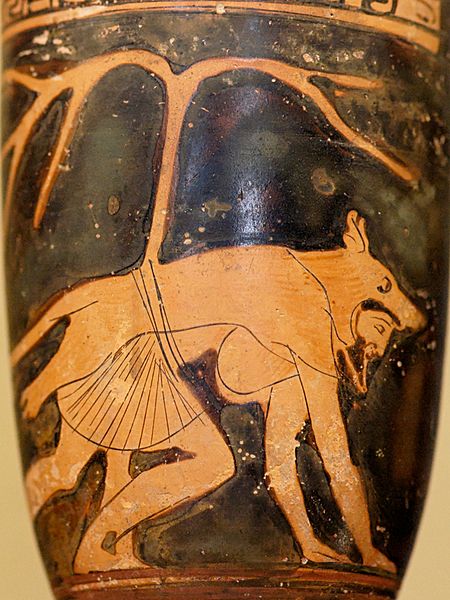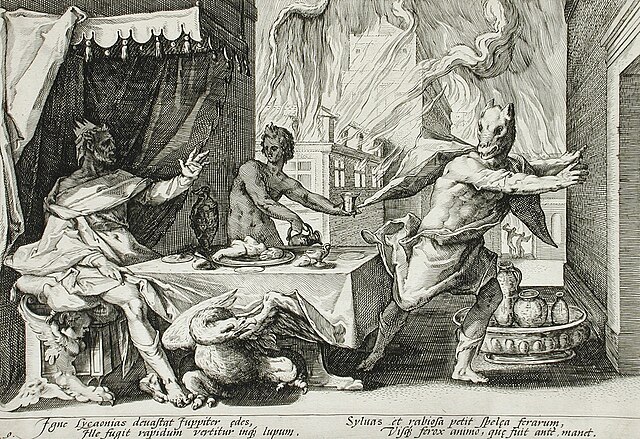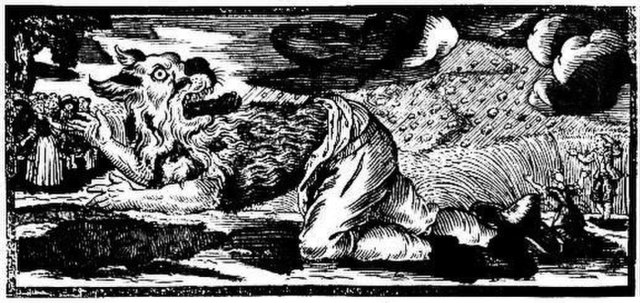Manuel Blanco Romasanta was Spain's first recorded serial killer. In 1853, he admitted to thirteen murders, but claimed he was not responsible because he was suffering from a curse that caused him to turn into a wolf. Although this defense was rejected at trial, Queen Isabella II commuted his death sentence to allow doctors to investigate the claim as an example of clinical lycanthropy. Blanco has become part of Spanish folklore as the Werewolf of Allariz and is also known as The Tallow Man, a nickname he earned for rendering his victims' fat to make high-quality soap.
Charcoal drawing from Romasanta's medical report
In folklore, a werewolf, or occasionally lycanthrope is an individual who can shape-shift into a wolf, either purposely or after being placed under a curse or affliction, with the transformations occurring on the night of a full moon. Early sources for belief in this ability or affliction, called lycanthropy, are Petronius (27–66) and Gervase of Tilbury (1150–1228).
Dolon wearing a wolf-skin. Attic red-figure vase, c. 460 BC.
Zeus turning Lycaon into a wolf, engraving by Hendrik Goltzius.
Vendel period depiction of a warrior wearing a wolf-skin (Tierkrieger).
A German woodcut from 1722





